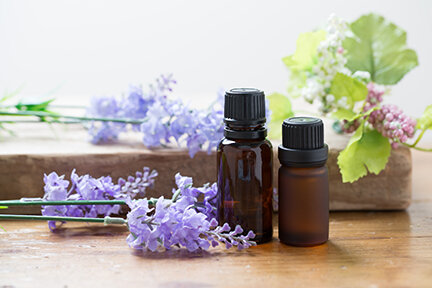A 3-day workshop to be held in Portland, Oregon
Aromatherapy or the use of oils as a therapeutic intervention has long been established in the annals of healing; whether at an intrinsic level, intuitive or through historical or tutored knowledge.
The rhinencephalon, and entorhinal cortex are areas of the brain, now referred to as our limbic system, that are closely involved in memory formation. It appears that memory and smell are intimately related and that we seem to embed particular memories with an associated smell. The use of oils as a therapeutic modality is associated with this understanding, and that particular oils appear to negate, enhance, and ablate the power of those memories leaving them as parts of our memory without the charge or force. We use a set of twelve oils carefully chosen for their long use over millennia. However, modern distillation, commerce, and marketing have produced a huge array of oils that are used in a therapeutic capacity, and which are as useful as our particular chosen ones. In this workshop, we will use all available oils.
InnerDialogue has in its repertoire, an extensive set of mudras (hand modes) that allow a practitioner, layperson, or user of oils to precisely determine the origin of a dysfunctional state–whether somatic, emotional, instinctual, psychological, or spiritual–and to locate the exact oil (and occasionally a combination of), location on the body, dosage, and mode of application. This allows the client to understand the origin of their dysfunction, its nature, and reasons, but also to understand why a particular oil.
Kinesiology, or manual muscle testing, is at best, an inexact art and science. Often labeled as a pseudo-science by detractors, we have, over the last 40 years, refined kinesiology so that its very inaccuracy, vagaries, and difficulty in reproducibility, become clues and nuances that inform the practitioner. It becomes both an art and science and is an invaluable feedback mechanism.
Mudras have been used in many different arenas, notably in dance, martial arts, forms of Vedic healing, and spontaneous illustration by babies when their neurology is under stress or dysfunction. It can be called protolanguage, as higher mammals also sign in a rudimentary fashion (gorillas and chimpanzees, and in other animals as particular gestures as signs of alarm, danger, or warning). The mudra itself is a gesture, formalized and named by humans, but mediated by our somatosensory and motor cortex. A mudra appears to be a signpost or engram of the state of the external and internal body, at every level of being. Thus these named mudras allow the practitioner to elicit a precise narrative from the client, as the mudras are collated in a sequential fashion. Mudra + mudra + mudra (etc) = a sentence (of a story or part thereof).
The workshop will be informational, explanatory, and hands-on.
The three days will introduce you to:
-
An Ontological exegesis –the underlying patterns that we as humans, co-exist in
-
Kinesiology or muscle testing–a precise, sophisticated form of manual muscle testing that provides for a rich panoply of feedback and information
-
A set of mudras or hand modes that will facilitate and bring alive a narrative or story that underlies the client’s dysfunction. These will then allow their body to choose the particular oil(s) that will facilitate healing and change. Furthermore, other mudras allow you to find the precise somatic location for their application, to determine dosage, and timing, and therapeutic modality.
-
Ample time to practice on participants, to give you the ability to use this work as well as to be expected in this time frame, but to leave, confident to use in a practice or home setting.

